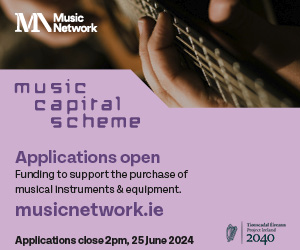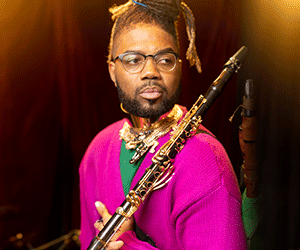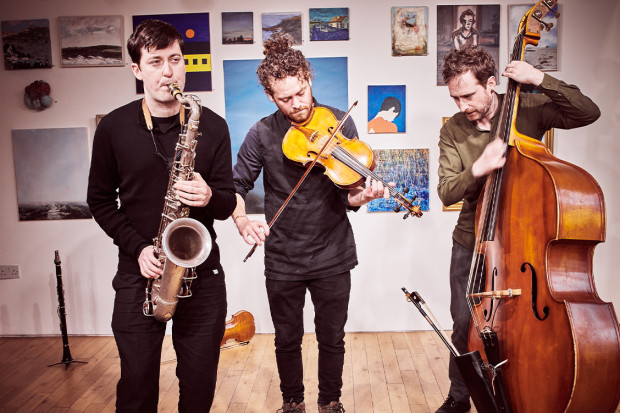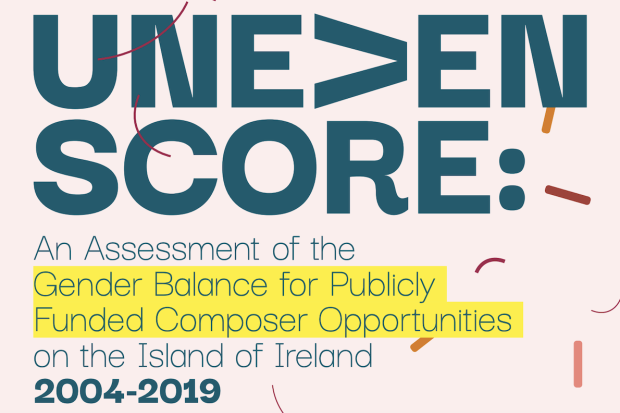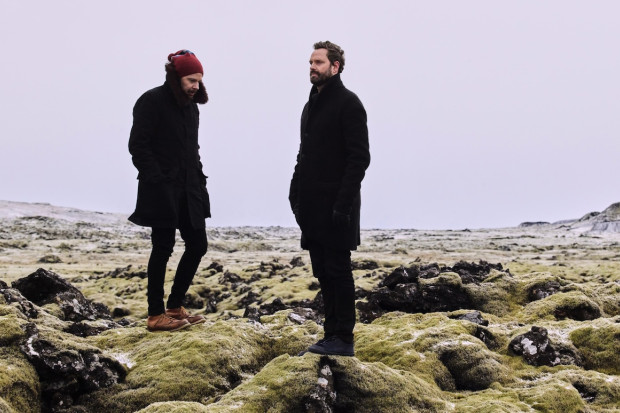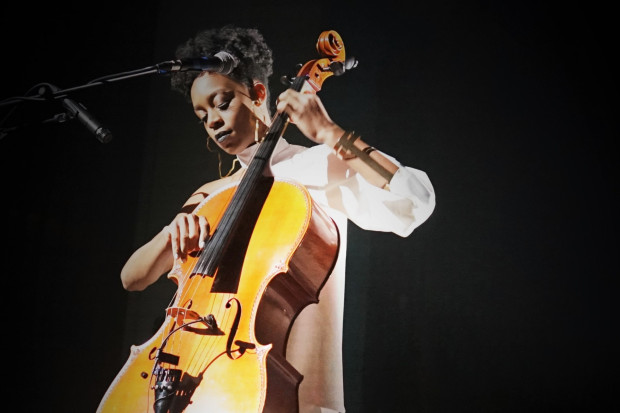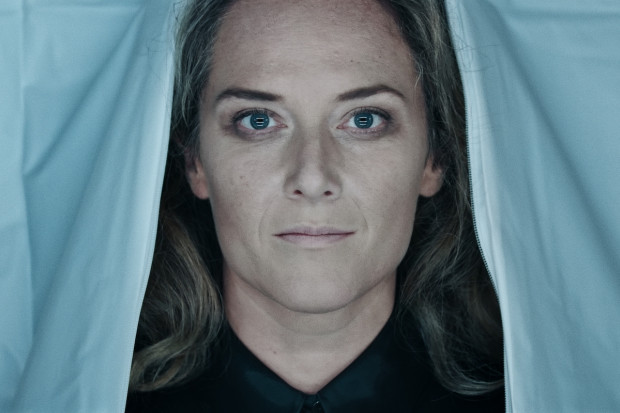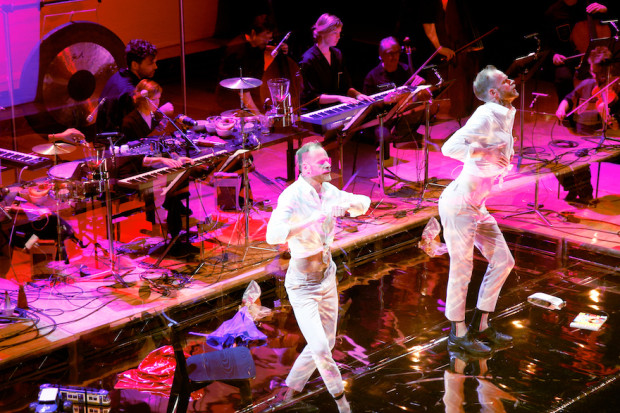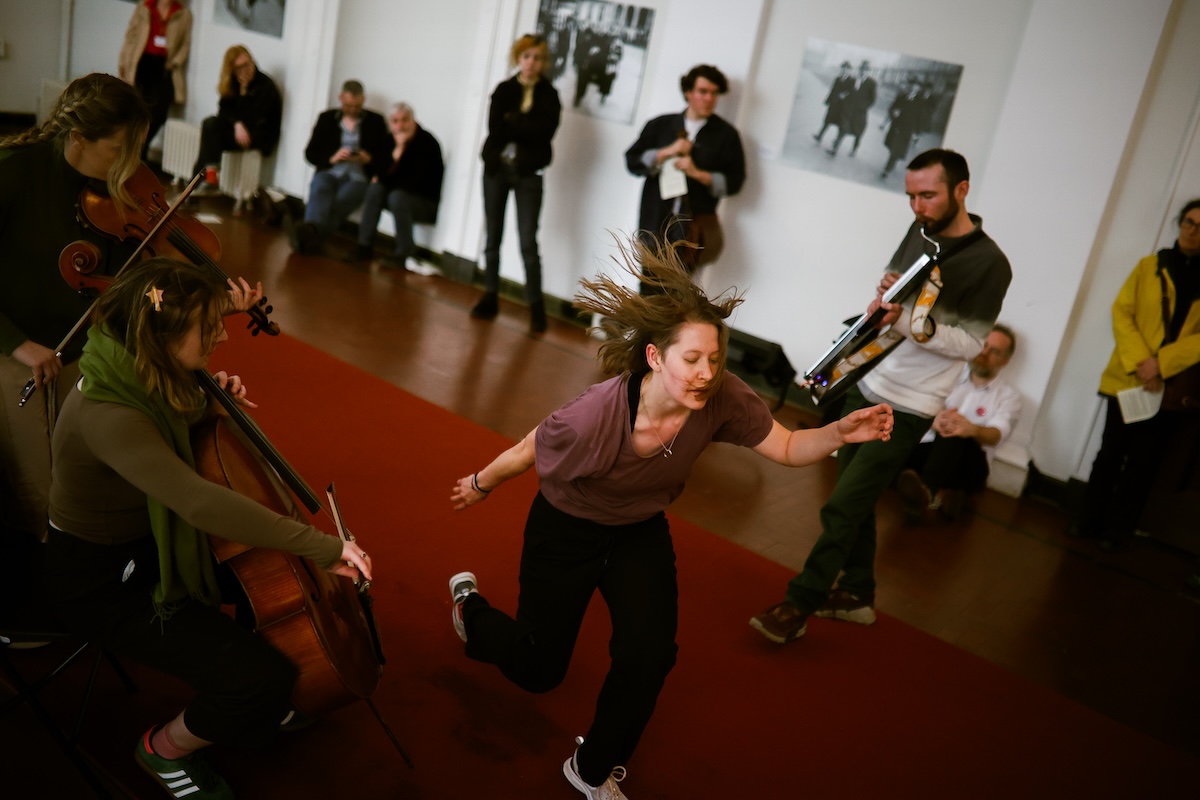
Kirkos performing 'Beginner’s Guide to Slow Travel' at New Music Dublin (Photo: Molly Keane)
Challenging and Curious – New Music Dublin: Days 1 and 4
For a review of days 2 and 3, see here.
***
New Music Dublin, focused in the National Concert Hall though with performances elsewhere in the city, probably gives an opportunity for more new works to be heard in a short time than any other festival in Ireland. I attended the first and last days and heard world premieres by Deirdre Gribbin, Raymond Deane, Rhona Clarke, Ann Cleare, Brian Irvine and others. The festival is a celebration of the Irish contemporary; while international composers feature, Irish works are the focus throughout, and even those Irish works that weren’t world premieres were often only a second performance – an Irish premiere following a single outing elsewhere.
It’s fitting that Thursday’s main auditorium evening performance by the RTÉ Concert Orchestra featured two world premieres by Irish composers, flanking Kaija Saariaho’s 2001 flute concerto Aile du songe, with the solo performed brilliantly by Silvija Ščerbavičiūtė.
Deirdre Gribbin’s Whispering Ogham came first. Gribbin has a good imagination for musical texture – an energetic rhythmic passage towards the end was particularly striking – but the majority of the music felt comparatively indistinct, rather unlike the writing for which it’s named, and often as if there was a melody buried in there somewhere but never quite audible.
In Anaphora, performed by Hugh Tinney, Raymond Deane takes the opening gambit from his 1988 Quaternion – also written for piano and orchestra – as its basis, and returns to it continually like the rhetorical device for which the new work is named, sometimes like a springboard leading to new gestures, others like an anchor stopping a passage in its tracks.
Like Anaphora, Rhona Clarke’s Rough Beast II, premiered by Evlana Sinfonietta at the Sunday afternoon concert jumps off from an existing piece; in this case her setting for voice and string quartet of Yeats’ ‘The Second Coming’. Clarke’s writing for string orchestra here is deft; she has an understanding of the wealth of sound and richness the ensemble provides. This concert also featured a new arrangement of Ryan Molloy’s energetic Luasc, and Talamh by inti figgis-vizueta, a work that moved smoothly through an array of colourful textures.
Even the National Concert Hall’s youth choirs – Cór na nÓg and Cór Linn – had the opportunity to perform world premieres, with new works by current and former members Gracie Gilmartin and Ferdia Ó Cairbre along with Cecilia McDowall’s moving 2018 work Everyday Wonders.
Thursday’s last concert, performed by the new group Stone Drawn Circles in the Kevin Barry room, offered some levity (though not without its extremes of sound). It opened with In Formation by the group’s harpist Úna Monaghan, a piece exploring pre-performance jitters, and featured the world premiere of Brian Irvine’s A Call to Arms, by turns furious and sardonic in its exploration of contemporary greed, setting words by Michelle Mone, who made enormous profit manufacturing shoddy PPE in 2020. Cat Hope’s Landay Sequenzas, setting translations of a form of female-led traditional Afghan poetry, was a striking work at this concert, with vocalist Michelle O’Rourke’s delivery dry and distant over roiling music. ‘And I’ll be …’ she begins before the broadest crescendo I heard at the festival. A mighty climax, then, ‘… gone.’
 Stone Drawn Circles (Photo: Molly Keane)
Stone Drawn Circles (Photo: Molly Keane)
Flexibility and versatility
Sunday morning’s concert by Musici Ireland featured a flexible ensemble, with a string quartet, a duo, and a trio respectively by Deirdre Gribbin, Amanda Feery and Linda Buckley. Gribbin’s Before the moon shattered and shone again was moving, finishing over glistening cello harmonics. The concert ended – and was named for – Liam Bates’ viola concerto, Earthrise, a well-crafted melodic work of the sort that goes down a treat for audiences and performers, but from the first viola entry, trading birdsong motifs with the flute, it was too sweet for me.
Aoife Ní Bhriain has shown her versatility as a performer on a number of occasions, and in the lunchtime Thursday concert she was matched in this skill by the viola da gamba player Liam Byrne. Their programme created convincing medleys where St Colombe’s tidy seventeenth-century counterpoint flowed neatly into Tommie Potts’ reels and then into Ligeti. Sebastian Adams’ 2018.3 was particularly beautiful, ending with delicate harmonics from the viola passed like a spark to the violin.
The work of John Cage has cropped up unexpectedly in my life a number of times recently, and his spirit (inevitably, but more explicitly than I’ve seen in a while) loomed over a couple of the works at this year’s festival. The opening work of the festival, David Downes’ there will be no silence, referred to Cage obliquely. Performed by actors Owen Roe and Aisling O’Sullivan, pianist Rolf Hind and cellist Adrian Mantu, this work used poetry by Adam Wyeth to jump into a series of naturalistic soundscapes – sometimes very literal (the ticking of a clock tapped inside the piano, or blaring traffic), others more abstracted.
I felt Cage more explicitly in Kirkos’ Beginner’s Guide to Slow Travel, conceived and performed by Sebastian Adams, Robert Coleman, Yseult Cooper Stockdale, Jane Hackett, Hannah Miller and Joan Somers Donnelly. Built on collaborative improvisations, it looks at climate change indirectly, and more directly at the need to reorder society to something kinder, gentler, and slower, through the compositional process itself as much as its result. It took about half the length of this work before it clicked for me, when I began to see it through something like a Cageian lens, focusing not on the whole but on the slowness and the moment. It begins almost silent. As it progresses, Hackett makes her way through a door carrying (or perhaps wearing would be more accurate) six folding chairs, struggling to move and yet trying to pick up more. Later the performers lie down for a nap – really! – and afterwards find if not a sense of tonality then at least one of a tonic. The closing moments were touching – literally, as the five performers cling together in quiet solidarity.
Laura Bowler’s ADVERT, performed by the composer with Decoder Ensemble in the Studio of the National Concert Hall on Thursday night, was as performative as Kirkos’ work, though where that was abstract and conceptual, ADVERT was intensely personal. Promotional material stated that she would be singing while getting tattooed and, while that’s the climax, it’s only part of it. Nobody mentioned, for example, the rubber dog masks, the trauma-dumping tap dance, the boxing, or the pianist stripping down to hot pants and holding up a sign that said ‘Fight’. Some of its sections are named for layers of skin and the analogy to the finale is clear, as she cuts through layers of her past, revealing herself in a work that is raucous and chaotic, but honest. I found this work too much to take during its performance, but it’s the one that has most firmly stuck in my mind, indelible as its conclusion.

Laura Bowler’s ADVERT (Photo: Molly Keane)
The Studio also saw Ann Cleare’s TERRARIUM on Sunday evening. There’s a strong sense of ritual here, starting with Crash Ensemble slowly circling the audience, bowing those instruments that could be bowed (bells and string instruments) and blowing those that could be blown (trombone, clarinet, alto flute). This procession lasted about fifteen minutes before the long central section with the ensemble on a dark stage, shielded by tapestries. Rituality endured even through its more frenzied sections, and such is the work’s patience that the overhead film projection, by Laura Sheeran, was absent until almost the 40-minute mark. The ending saw the ensemble return to the audience, carrying bows and glass bowls containing lights, and using the bows to ‘pass’ light from one performer to another. The effect in the closing moments was hypnotic.
The final concert of the festival was a double-bill performed by Il Ritorno del Angelo, a new free improvisation ensemble of saxophonist Nick Roth, vocalist Olesya Zdorovetska, pianist Izumi Kimura and double bassist Barry Guy, and in the second half, the turntablist Mariam Rezaei. The quartet’s performance was four works, one composed by each and each based on a poem.
Kimura plays the inside of the piano so well it could be her first instrument, and Zdorovetska has an astonishing array of vocal techniques at her command, from whispered clicks to tight notes matching the highest pitches of the soprano saxophone. Guy’s bass could dominate the room as easily as it could be a sympathetic partner for the piano or the sax, and the sax itself slid from squeals to percussion to breathless bubbling slides. In the second half, Rezaei’s turntable performance pulled off some dazzling effects: a series of atonal piano chords became a looping beat; a piece of piercing feedback was slowly manipulated into a bright chord.
Festival director John Harris made numerous mentions of the festival’s umbrella status, exploring many styles under the rubric of new. I attended only half the festival (minus an intriguing trumpet concert at Richmond Barracks which I missed due to the realities of crossing Dublin at rush hour) and heard music by turns assertive, pleasant, thoughtful, angry, insular and adventurous. It was an almost overwhelming amount of often challenging music, but led by curiosity – of its composers, of its programmers, of its performers, and of its audience.
For a review of New Music Dublin days 2 and 3, see here.
Subscribe to our newsletter.
Published on 2 May 2024
Brendan Finan is a teacher and writer. Visit www.brendanfinan.net.







